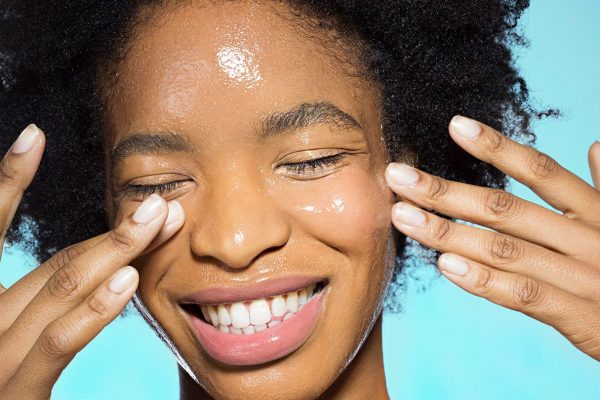Essential oils work wonders to keep the skin hydrated. They hydrate it, stop water loss, and give the tissues antioxidants, vitamins, and essential fatty acids like Omega 3, Omega 6, or Omega 9.
Unlike other products that only work on the epidermis, they reach the deepest layers of the skin, where they work to prepare and repair the skin from the inside out in addition to being fully absorbed.
Finding the ideal formula for combination or oily skin is required because oils made for facial use do not grease or clog pores. Some oils, like jojoba, which regulate sebum production, can even improve oily skin.
The high concentration of nutrients in oils like rosehip or argan aids in tissue healing and cell regeneration. Aloe Vera Oil is one of many oils that has calming and anti-inflammatory properties. They leave the skin feeling soft and elastic while enhancing its tone, shine, and luminosity.
Pure Oil or Natural Oil: The Difference
Each ingredient used to make facial oils has distinct qualities and is suggested for particular needs or skin types. In addition to the properties, the presentation of the oils—whether Pure or Natural—influences which oil is best for a given application.
As the name implies, pure oils have been extracted only from the first cold pressing and are packaged in their purest form. They are true beauty elixirs that are extremely concentrated and dense.
Natural oils combine the potency of nutrient-rich oils like Aloe Vera, Rosehip, Jojoba, and Argan in a perfect blend with base oils like Coconut or Sunflower to enhance their texture and absorbency. They are, therefore, suitable for daily use on the entire face and are especially well suited for those who follow the Oil in their routine with the application of other products.
We will now discuss the advantages that each extract has on the skin in light of the distinction between Pure and Natural Oils:
- Jojoba Oil is notable for having a high level of skin compatibility, allowing for very light absorption and controlling fat production: Contrarily, its vitamin E content guards against early aging.
- Rosehip Oil can regenerate tissues, making it ideal for reducing its high antioxidant content. It also has an anti-aging effect. It is recommended for mature skin that is extremely dry. It is indicated for very dry and mature skin.
- Argan Oil has a powerfully nourishing and moisturizing effect. Used for normal, dry, and mature skin, it gives the face elasticity, vitamins, and nutrients.
- Aloe Vera Oil prevents redness and inflammation while providing light hydration, making it ideal for sensitive skin.
When and how to apply essential oil on the face
Facial oils can be used alone to moisturize and protect the face or as part of a routine that includes creams, sunscreens, and anti-aging products. It has great advantages for the skin and can be used both during the day and right before bed.
It is best to prepare the skin with a floral tonic before using the Oil on the face. The toner cleans up impurities and balances the pH and sebum of the skin. If light-textured serums or ampoules are used after the tonic, they would be applied before the oil.
The Oil is the final or preceding step in the facial routine because it is a thick product that takes some time to absorb and can if preferred, be used instead of moisturizer.
Start with one or two drops, and increase the dosage as necessary. You place them on your fingertips and massage your face in a circular motion. The massage encourages the absorption and stimulates circulation so that you will absorb all of the facial oil in a short time. Since Pure Oil can be more difficult to spread, we advise using it at night or combining a drop with your morning moisturizer if you choose to use it. Pure Oil is thicker.
Since the Facial Oil is photosensitive, it is crucial to follow up with a light cream that has a total sun protection factor if you apply it during the day. This will prevent the development of spots or minor burns.

